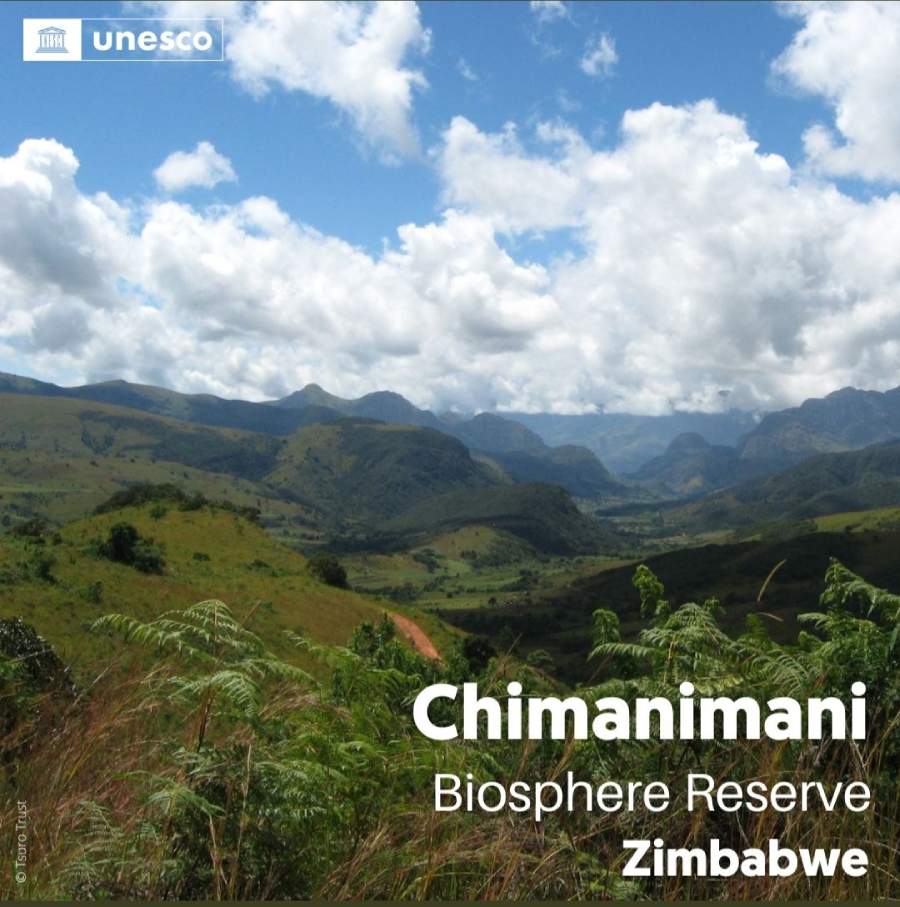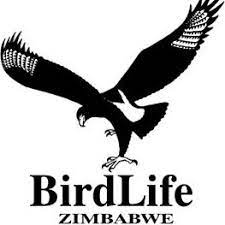IMPORTANT BIRD AREAS
Z014 Chimanimani Mountains
FULLY PROTECTED
GLOBAL IBA (Al, A2, A3)
19°53’S; 33°03’E
c. 17 100 ha
SITE DESCRIPTION
The Chimanimani Mountains form the southernmost part of the chain of mountains along the Zimbabwe-Mozambique border. The village of Chimanimani lies about 125 km south of Mutare and is part of the Chimanimani District. The mountains are a series of parallel quartzite and contorted schist ridges, 19 km wide and running north-south for 40 km. The greater part of the Chimanimani Range lies in Mozambique. Most of the Zimbabwean portion of the mountains lies within the Chimanimani National Park (171 km2). The mountains are only accessible through a series of footpaths and the area is popular with hikers and mountaineers.
The topography is extremely rugged, with ranges of jagged peaks and deep ravines. The main plateau is at an altitude of 1 500-1 800 m a.s.l., with peaks reaching 2 400 m a.s.l. and dropping as low as 320 m a.s.l. in deep gorges and river valleys. In the north, the mountains are deeply bisected by the Musapa River, which flows eastwards into Mozambique through the Musapa Gap. The Haroni and Bundi rivers run north-south, joining with the Rusitu River before turning east to Mozambique at 312 m a.s.l.
The mountains intercept warm moist air from Mozambique, which cools as it is pushed over the mountain chain; the orographic rainfall can be in excess of 1 500 mm p.a. on windward slopes. There are frequent mists. Winter frosts are common on the plateau. Being derived from quartz and schist, the soils are white sands with a very low water-holding capacity and low fertility. These unusual, and localised edaphic factors, dating back to the beginning of the Tertiary, 60 million years ago, have been the major factor contributing to the evolution of local endemics, which have more in common with the South African Drakensberg than any other part of the Zimbabwean flora. The Chimanimani form an important link between the Drakensberg in South Africa to the mountains in Malawi and East Africa.
The plateau is covered in grassland, with Afromontane forest developing in sheltered valleys where there is sufficient ground water. The mid-altitude forests are better developed on the Mozambican portion of the mountain chain. The dry montane forests extend up to 1 500 m a.s.l. or higher in sheltered places and are characterised by Schefflera umbellifera, Ilex mitis, Macaranga mellifera, Maesa lanceolata, Podocarpus latifolius, Widdringtonia nodiflora and Syzygium cordatum. Strelitzia nicolai and Cyathea dregei occur along streams. The lower-altitude forests in the valleys have not been well studied.
The grasslands are partly induced through hydromorphic conditions and partly by wildfires. Philippia, Erica and Protea spp. scrub is interspersed among the open grasslands on the plateau. As with heathland habitats elsewhere, fire is a major factor influencing the vegetation structure and composition on the plateau.
On the drier slopes, the grassland and forest changes rapidly into miombo woodland with Brachystegia spiciformis, B. glaucescens and Uapaca kirkiana as dominants. Part of the commercial farm bordering the west of the Park has dense Black Wattle Acacia rnearnsii thickets. There are extensive commercial pine and wattle plantations throughout the district.
BIRDS
The most recent checklist recorded a total of 221 species from these mountains. The earliest records made of the avifauna of the Chimanimani Mountains were by Swynnerton in 1906, when he collected the first specimen of Roberts’s Warbler Oreophilais robertsi here. There were several school field trips and other excursions in the 1960s. A Bokmakierie specimen was collected in 1967, which refuted the scepticism of earlier reported sightings. The taxon, named Telophorus zeylonus restrictus, is endemic to the Chimanimanis and is highly range-restricted. The Chimanimanis are the type locality for several other subspecies, including Yellow-bellied Greenbul Phyllastrephus flavostriatus dendrophilus in the montane forests, Gurney’s Sugarbird Promerops gurneyi ardens in the open montane grassland and Protea scrub and Cape Bunting Emberiza capensis smithersii (M.P.S. Irwin, pers. comm.). Roberts’s Warbler Oreophilais robertsi and Chirinda Apalis Apalis chirindensis are common here. Several pairs of Blue Swallow Hirundo atrocaerulea occur in the grasslands. A host of other biome-restricted assemblage species occur including 17 Afrotropical Highlands, 2 East African Coast and 7 Zambezian species.
OTHER THREATENED/ENDEMIC WILDLIFE
Wild (1964) listed 43 plants endemic to the Chimanimanis, but recent collections have indicated the number to be closer to 60. There are 5 species of endemic Aloe. The Chimanimanis hold several endemic or restricted-range amphibians: Poyntonophrynus fenoulheti grindleyi, Amietia johnstoni, Strongylopus grayi, Arthroleptis troglodytes and Arthroleptis xenodactyloides (Lambiris 1989). The Berg Adder Bitis atropos is fairly common in the montane grasslands. Leopard Panthera pardus, Sable Antelope Hippotragus niger, Blue Duiker Philantomba monticola, Samango Monkey Cercopithecus mitis, Buffalo Syncerus caffer and Elephant Loxodonta africana were recorded in the 1970s. The latter two species have not been recorded recently and presumably have been hunted out. Nile Crocodile Crocodylus niloticus have been recorded at lower altitudes in the Bundi River.
CONSERVATION ISSUES
The Zimbabwean side of the Chimanimanis, in the National Park, has suffered from gold panners, with degradation of the Bundi plain and river and mercury contamination. This invasion has affected tourist use. This has also resulted in litter, unwanted wildfires and soil erosion on footpaths. A second more insidious threat to the freshwater ecosystems in the Park is the introduction of Rainbow Oncorhynchus mykiss and Brown Trout Salmo trutta, both alien species, into the Bundi River for recreational fishing. Trout are highly active predatory fish that have a severe impact on other aquatic vertebrates and invertebrates, particularly if these species have not evolved in the presence of a predatory fish. There has been no research on the impact of trout in the rivers and streams of the Eastern Highlands. Current research in South Africa suggests that these fish are highly detrimental to indigenous systems and they are being actively removed from South African wetlands. Given the high biological importance of the Chimanimani Mountains, a similar policy should be adopted by Zimbabwean National Parks authorities.
In Mozambique, the mountains are only formally protected in two forest reserves. The high plateau, holding most of the biologically important endemic species is not protected. An international ‘peace’ park with Mozambique covering 850 km2 has been suggested. It is not known whether the Mozambican authorities will implement this plan.
Globally threatened
Taita Falcon – Breeding (pairs) – Br? | Total Numbers – 5 – 10
Blue Swallow – Breeding (pairs) – 4 – 6 | Total Numbers – 10 – 15
Globally near-threatened
* Southern Banded Snake-eagle
RR & BRA | STATUS
Southern Banded Snake-eagle | Rare
Striped Flufftail | Fairly Common
Scarce Swift | Fairly Common
Blue Swallow | Rare
Grey Cuckooshrike | Fairly Common
Stripe-cheeked Greenbul | Common
Miombo Tit | Uncommon
Cinnamon-breasted Tit | Rare
Kurrichane Thrush | Common
Miombo Rock-thrush | Uncommon
Orange Ground-thrush | Fairly Common
White-starred Robin | Common
Barratt’s Warbler | Common
Yellow-throated Woodland-warbler | Common
Chirinda Apalis | Uncommon
Roberts’s Warbler | Uncommon
Pale Batis | Uncommon
White-tailed Crested Flycatcher | Common
Gorgeous Bush-shrike | Fairly common
Olive Bush-shrike | Fairly common
Gurney’s Sugarbird | Fairly common
Bronzy Sunbird | Uncommon
Miombo Double-collared Sunbird | Fairly Common
White-bellied Sunbird | Rare
Red-faced Crimsonwing | Uncommon
Yellow-bellied Waxbill | Abundant
Black-eared Seedeater | Rare
* – Species does not meet IBA threshold
RR & BRA – Restricted-range and Biome-restricted Assemblage
Br? – Suspected breeding
V – Vagrant
* – Species does not meet IBA threshold
RR & BRA – Restricted-range and Biome-restricted Assemblage
Br? – Suspected breeding
V – Vagrant
More Information
In 2022 Chimanimani was designated the second Biosphere Reserve in Zimbabwe.
More on the Unesco website
Article on Chimanimani.com
Chimanimani BR Nomination Form (PDF)

